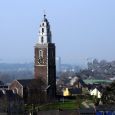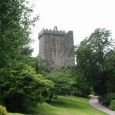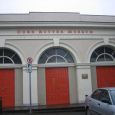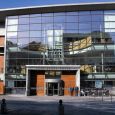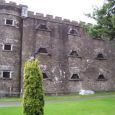Cork
Advertisement
By Air
Cork Airport is located a short distance from the centre of the city and offers a choice of both domestic and international flights. A good bus services operates between the airport and the city or alternatively, taxis and car hire are also available. The airport offers the normal range of facilities including ATMs, bureaux de change and information desks.
By Rail
Travelling to Ireland by train is a popular choice, as there is an extensive rail network. The Channel Tunnel connects Britain and France, so train travel to other European cities is straightforward. You can organise your journey by train through the InterRail service offered by Larnrod Eireann, Ireland's national rail carrier. There are Channel services from Britain, with ferry connections taking you across the Irish Sea, by both day and at night.
Trains from Kerry, Limerick, Waterford and Wexford arrive at Kent Station, less than a mile out of the city centre on the Lower Glanmire road. There are direct intercity rail services to Heuston Station in Dublin and commuter services to the town of Cobh by Cork harbour.
The station facilities include public toilets, a car park, luggage trolleys, a bookshop and a restaurant. Irish Rail Travel Centre can be found on platform 4. If you intend to use the rail service as your mode of transport while in Ireland, you may want to consider one of Larnród Éireann's Explorer Tickets, which offer discounted prices.
By Bus
Long distance bus services from Britain to Ireland are operated by Eurolines in conjunction with Bus Eireann You can travel from over 1,500 locations within Britain and from over 400 destinations throughout Europe. The luxury buses are all equipped with onboard toilet facilities and reclining seats. Within Ireland, Bus Eirann provides a nationwide expressway service, provincial service and city service. The bus station is located at Parnell Place, alongside Merchant's Quay.
Advertisement
St Ann's Shandon
Northwest of St Patrick's Bridge stands one of the city's landmarks, St Ann's Church, Shandon (1722). Its handsome tower - which looks rather like a telescope drawn out in three stages and is also popularly known as the "pepperpot" - is of particolored stone, red sandstone on the north and east sides, gray limestone on the other two. It contains eight bells cast by Abel Rudhall in 1750 and has a celebrated carillon. Although the tower is only 120ft/36m high it affords a wide panorama of the city thanks to the church's elevated situation.
Blarney Castle
Situated in the village of Blarney, five miles northwest of Cork, this landmark is famous for its stone, which is traditionally believed to have the power to bestow eloquence on all those who kiss it. Over the years, millions have flocked to Blarney, making it a world landmark and one of Ireland's greatest treasures. A number of world leaders and American presidents have been attracted by its mystical powers.
The castle was built nearly 600 hundred years ago and is the third to have been erected on this site. The stone itself is set in the wall below the battlements and to kiss it, you have to lean backwards from the parapet walk while holding on to an iron rail. Take some extra time to relax and enjoy the beautifully maintained gardens of lawns, shrubs, flower beds and trees, which gently slope towards the lake.
Cork Butter Museum
This unique museum on O’Connell Square celebrates one of the great Irish success stories. Cork used to have the largest butter market in the world and it had a major influence in the city's prosperity from the late 18th century onwards. The museum recalls the early dairy trade in Ireland and how milk was churned into butter and preserved in the bogs for later use. It goes on to describe how, in the 18th century, Cork became the main supplier in the Atlantic for both the British Navy and trade convoys.
The following century, it was fortunate to survive the catastrophic famine that hit the area and decimated the city. It was able to do this by changing its focus and concentrating on the lucrative English butter market. Finally, the story is completed by an informative video on the modern success of the Kerrygold brand. The museum is located in the historic Shandon area of Cork city, next to the Firkin Crane Theatre.
Cork Opera House
The Opera House has been part of the pattern of the cultural and social life of the city for 150 years and is the only purpose-built Opera House in the country. It was extensively renovated in 1993, and now displays a modern and striking façade. It plays host to many events throughout the year including opera, dance, drama, musicals and concerts.
Cork City Gaol
This listed building is an important part of Irish architectural heritage. It dates to 1824, and is a fine example of the work of Sir Thomas Deane. From the outside, it looks more like a castle than a purpose-built prison, with a number of interesting and unusual features. The building has a number of classical Gothic details such as turreted battlements and dripstones. You can take a leisurely tour around the Gaol with a taped guide that focuses on social history, interspersed with characters of national importance. The Gaol can be found at Sunday's Well, approximately 30 minutes walk from the city centre.
April - May
July - August
July - August -> 20(°C) - Summer
January - February -> 2(°C) - Spring
Advertisement

